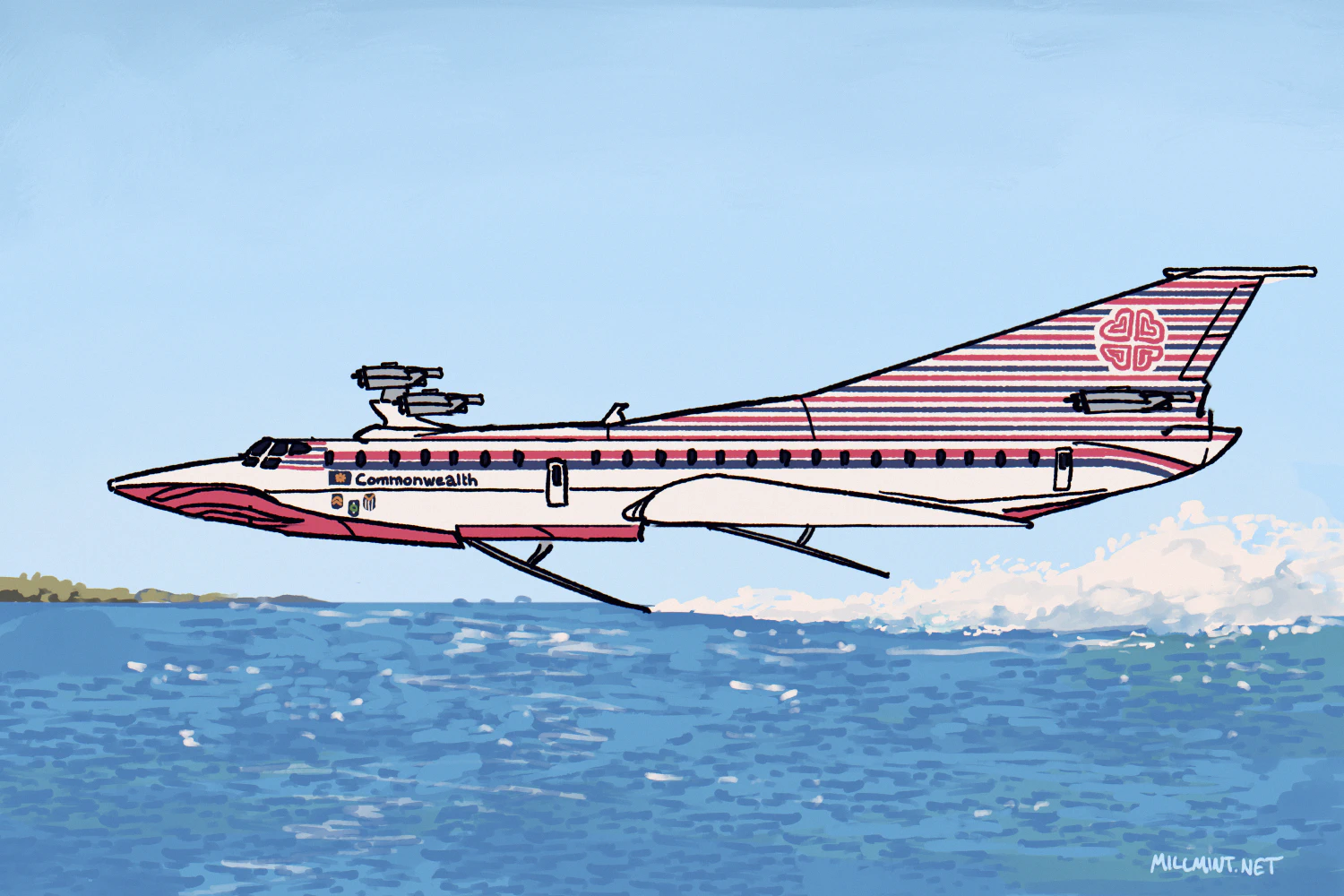NEW Story: Sunday Morning
Gull-Class Ground Effect Craft

The Gull-Class is an aircraft in Vekllei.
| Gull-class Ground Effect Craft | |
|---|---|
| Passenger Ekranoplan | |
| Built | 2058-64 |
| Class | Gull-class |
| Crew | 6 |
| Length | 50 metres |
| Operating | 28 |
| Passengers | 70 |
| Service | Commonwealth Lines |
| Speed | 400km/h |
| Station | Canary, Karu |
| Weight | 50 tonnes |
The Gull-class ground effect craft is a passenger ekranoplan jointly operated by Commonwealth Lines and Commonwealth Airways for inter-island transport across medium distances in the Atlantic and Caribbean. The craft fills a gap between conventional ferries and aircraft, providing fast connections on routes where passenger volumes don’t justify full airline service. It’s particularly useful in the scattered island chains of the Kalina and Lucaya Commonwealths, where frequent departures matter more than raw speed.
The Gull-class operates in ground effect, flying just 2 metres above the wave surface at speeds around 400km/h. This provides roughly five times the speed of a ferry whilst consuming significantly less fuel than conventional flight. The craft’s distinctive silhouette – dominated by an enormous stabiliser and a hunchbacked engine cluster – makes it unmistakable approaching island terminals.
The hull uses a three-step design that progressively lifts the craft out of the water during takeoff. Each step creates a ventilation point that breaks the water’s grip on the hull, allowing the craft to rise onto its aft planing surface before breaking free into ground effect flight. This stepped configuration handles moderate Atlantic swells better than a smooth hull, though operations are limited to seas below 2.5 metres.
Four turbofan engines sit clustered on a raised pylon forward of the wing, creating the craft’s characteristic hunchback profile. This unusual configuration directs engine thrust across the wing’s upper surface during takeoff, enhancing the ground effect cushion when it’s needed most. The engines can vector thrust downward through simple deflector plates, providing additional lift for rough sea operations.
The massive stabiliser running nearly the full length of the fuselage provides the directional stability that conventional tail designs struggle to achieve in ground effect. Its gentle forward curve and enormous height create a distinctive profile visible from distance, whilst the large rudder provides positive control even when flying metres above the water in disturbed air.
Passenger accommodation is straightforward – 80 seats in a 2+2 configuration above the wing structure. The cabin is lower and slightly more cramped than a conventional aircraft, but the journey times are short enough that comfort takes second priority to efficiency. Access is through a single port-side door, with passengers boarding directly from reinforced jetties at island terminals. The craft doesn’t require sophisticated port infrastructure, which suits smaller republics perfectly. Most terminals consist of little more than a concrete pier and a passenger shelter.
There are 28 Gull-class craft in service across the Commonwealth’s Atlantic routes. The largest concentration operates in the Kalina island chain, where they provide daily connections between scattered republics. Others serve the Canary Islands to Cape Verde route, the inter-Azores network, and the Bahamas-Turks & Caicos corridor. The craft have proven reliable in moderate seas and are popular with islanders who appreciate the speed without the expense of conventional air travel.